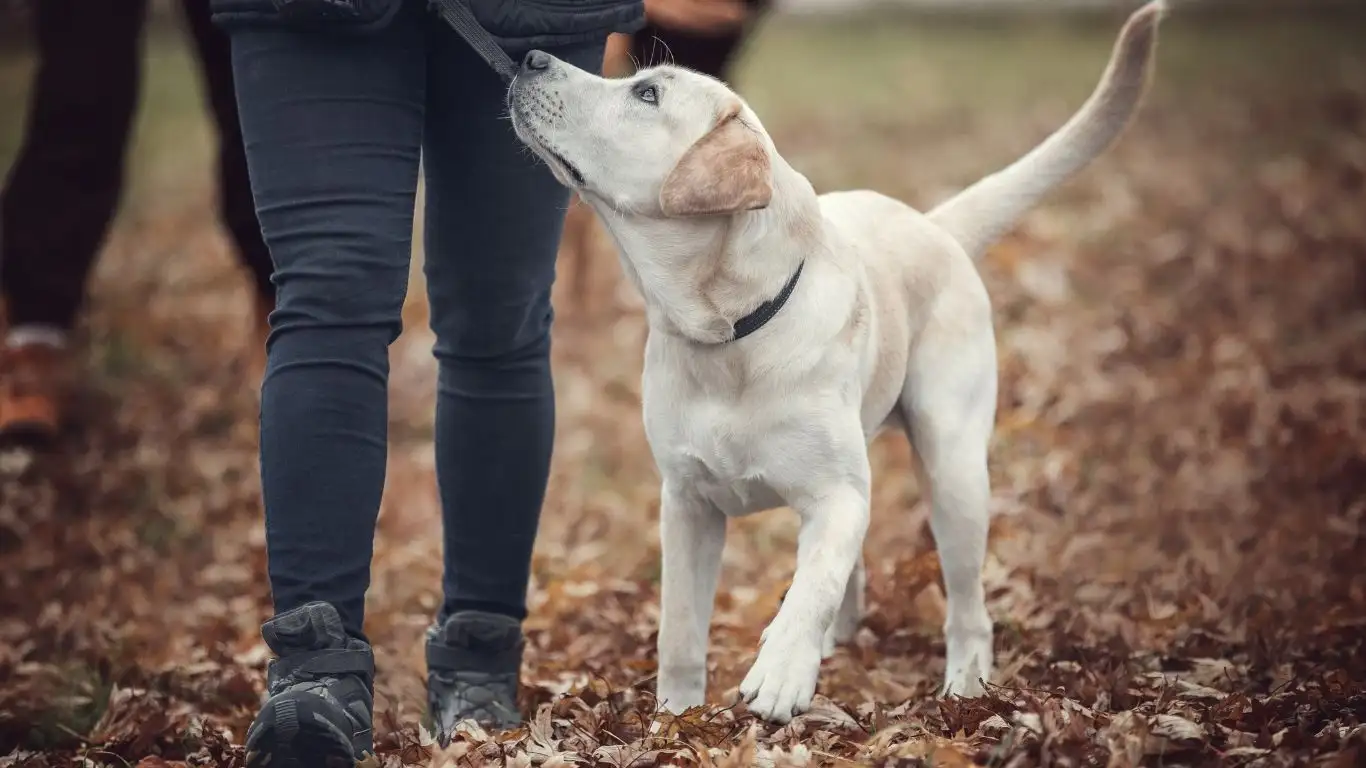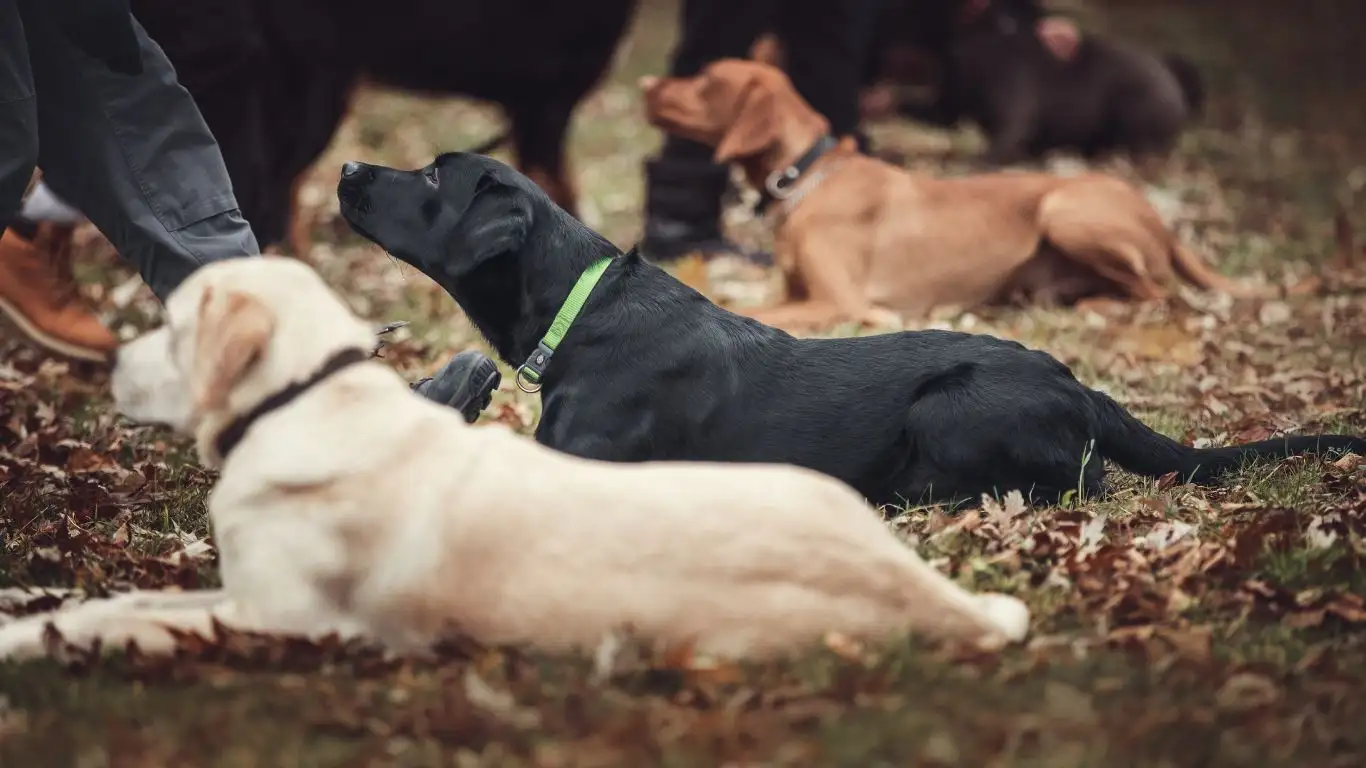Stop Your Dog’s Doorbell Freakout: Proven Training Tips That Work
You’re expecting a package, or maybe a friend is stopping by. The doorbell rings, and suddenly—your dog explodes into a barking frenzy, sprinting to the door like it’s the end of the world. Sound familiar? If you’ve ever wondered how to train a dog to stop reacting to doorbells, you’re in the right place. As a Certified Professional Dog Trainer (CPDT-KA), I’ve worked with countless dogs who treat the doorbell like a siren call to chaos. But don’t worry—there’s a way to teach them a calmer response, and I’m going to walk you through it.
Why Do Dogs React to the Doorbell?

Before we jump into solutions, let’s talk about why dogs lose their minds when they hear the doorbell. Understanding the cause makes training a whole lot easier.
1. Alert Instinct
Dogs are natural watchdogs. Even the smallest lap dogs have an instinct to alert their humans about potential intruders. In their eyes, the doorbell means, “Someone is coming!”—and they want to make sure you know.
2. Excitement and Anticipation
Some dogs don’t just bark—they bounce, spin, or run in circles when the doorbell rings. Why? Because the sound usually means guests, deliveries, or walks. Over time, they associate it with something exciting.
3. Fear or Anxiety
Not all dogs bark from excitement. Some react to the doorbell because it triggers anxiety. If your pup is nervous around strangers or unexpected noises, their reaction may stem from fear rather than joy.
Step 1: Desensitizing Your Dog to the Doorbell

One of the most effective ways to reduce doorbell barking is desensitization. This means gradually teaching your dog that the doorbell isn’t a big deal. I’ve used this technique with dozens of clients, and it works like magic when done correctly.
How to Do It:
- Record the Doorbell Sound: Use your phone or a speaker to play the doorbell sound at a low volume.
- Pair the Sound with Calmness: When the sound plays, stay completely relaxed. No reaction, no tension.
- Reward Quiet Behavior: If your dog doesn’t react, reward them with a treat or praise. If they bark, ignore them until they settle.
- Gradually Increase the Volume: Over time, raise the volume until they stay calm even with the real doorbell.
Some dogs catch on quickly, while others take a little longer. The key is consistency—don’t rush the process.
Step 2: Teaching an Alternative Behavior

Now that we’ve toned down the excitement, we need to teach your dog what to do when the doorbell rings. Instead of barking, they should have a job—like going to their bed or sitting calmly.
The “Go to Your Spot” Command
This is a game-changer. Instead of charging the door, your dog learns to go to a designated spot and wait.
- Pick a Spot: Choose a bed, rug, or designated area away from the door.
- Use a Command: Say “Go to your spot” and lure them there with a treat.
- Practice Without the Doorbell: Reward them for staying in their spot before adding distractions.
- Add the Doorbell: Ring the bell, then immediately guide them to their spot.
- Reward and Repeat: Each time they go to their spot instead of barking, give them a treat.
With practice, your dog will start heading to their spot automatically when they hear the doorbell—no barking required.
Next Steps in Training
Now that we’ve started building a calmer response, the next phase of training is reinforcing this behavior and dealing with more challenging situations—like when guests actually walk in. But don’t worry, I’ve got you covered! In the next section, we’ll dive into advanced strategies, guest greetings, and troubleshooting stubborn cases.
Step 3: Reinforcing Calm Behavior Around Guests

Now that your dog is learning to stay calm when the doorbell rings, the next challenge is maintaining that composure when guests enter. For many dogs, the doorbell is just the beginning—the real excitement (or stress) happens when new people step inside.
1. Keep Greetings Low-Key
Dogs pick up on our energy. If we make a big fuss when guests arrive, they will too. I always tell my clients, “Greet your guests the way you want your dog to greet them.” If you’re calm, your dog is more likely to mirror that.
2. Use a Leash for Extra Control
For dogs who get overly excited or anxious, I recommend using a leash during training sessions. This helps manage their movements while they learn the correct behavior. Keep the leash loose, though—this isn’t about restraining them, just guiding them.
3. Reward Good Behavior Immediately
Have treats handy and reward your dog for staying calm, sitting, or remaining in their designated spot when guests enter. If they jump up or bark, ignore them until they settle, then reward the calm behavior.
Step 4: Teaching the “Quiet” Command

Even with the best training, some dogs will still let out a bark or two when they hear the doorbell. That’s okay! The goal isn’t to completely silence your dog—it’s to teach them when to stop.
How to Teach It:
- Wait for your dog to bark (triggered by the doorbell or another noise).
- Say “Quiet” in a calm, firm tone.
- Hold a treat in front of their nose. Most dogs will stop barking to sniff it.
- As soon as they’re quiet, reward them with the treat and praise.
- Repeat several times, gradually increasing the time they must stay quiet before getting the reward.
With repetition, your dog will start associating the word “Quiet” with stopping barking—and eventually, they’ll obey without needing a treat every time.
Step 5: Practicing with Real-Life Scenarios

Practice makes perfect! Once your dog is showing progress, it’s time to test their new skills in real-life situations. Here’s how:
1. Recruit a Friend or Family Member
Ask someone to ring the doorbell randomly while you’re home. This helps reinforce training when your dog isn’t expecting it.
2. Vary the Scenario
Sometimes have guests enter immediately after the doorbell rings, and other times, have them wait. This teaches your dog that the doorbell doesn’t always mean someone is coming inside.
3. Be Patient and Consistent
Dogs learn at different paces. If your pup backslides and starts barking again, go back to basics and reinforce the training. With time and patience, they’ll get it.
Next Up: Troubleshooting Common Challenges
Even with the best training, some dogs need extra help breaking the doorbell barking habit. In the next section, I’ll cover common roadblocks, stubborn cases, and advanced techniques for those particularly persistent pups!
Troubleshooting Common Challenges

So, you’ve been working on how to train a dog to stop reacting to doorbells, and things are improving—but maybe not as quickly as you’d hoped. Don’t worry! Some dogs take longer than others to unlearn their doorbell excitement. If you’re facing some hiccups, let’s go over a few common roadblocks and how to fix them.
1. My Dog Is Still Barking at the Doorbell
If your dog is still reacting, take a step back and reinforce the earlier training. Here’s what I recommend:
- Lower the intensity: Go back to playing the doorbell sound at a very low volume and reward calmness.
- Shorter training sessions: Keep sessions under 10 minutes to avoid frustration.
- Increase rewards: Use higher-value treats (think cheese or chicken) for better motivation.
2. My Dog Is Calm at First, But Loses It When Guests Enter
This is common, especially for social dogs. Try this approach:
- Use a leash: Keep your dog leashed and guide them to their designated spot.
- Practice impulse control: Use commands like “Sit” and “Stay” while guests enter.
- Reinforce calmness: Have guests ignore your dog until they settle down.
3. My Dog Gets Worse When I Try to Correct Them
Some dogs get even more worked up if they sense frustration from their owner. If corrections are making things worse:
- Stay calm: Your dog feeds off your energy—relax, take a deep breath, and reset.
- Use positive reinforcement: Instead of scolding, focus on rewarding the behavior you want.
- Try a different training approach: Some dogs respond better to redirection, like giving them a toy to carry when guests arrive.
Advanced Training Techniques for Persistent Barkers

If you’ve tried everything and your dog is still struggling, you might need to step up your game with these advanced methods.
1. The “Mat Training” Method
This method teaches your dog to go to a mat when they hear the doorbell and stay there.
- Place a mat near the door: This should be a comfortable, non-slip surface.
- Reward for going to the mat: Say “Go to your mat” and use treats to reinforce the action.
- Add the doorbell: Ring the bell, then immediately guide your dog to the mat.
- Increase duration: Gradually extend the time they must stay there before getting a reward.
2. Using a Doorbell Chime Replacement
Some dogs react purely to the sound of the doorbell. In this case, switching to a different chime or using a smart doorbell that sends a phone notification instead can make a big difference.
3. Professional Help
If your dog has extreme reactions—like aggressive behavior or severe anxiety—it may be time to work with a professional trainer or a veterinary behaviorist. Some dogs need more structured programs, and that’s okay!
Final Thoughts
Training a dog to stay calm when the doorbell rings isn’t always a quick fix, but with patience and consistency, you’ll see results. Remember, every dog learns at their own pace, so celebrate small victories along the way!
References
- WebMD – Dog Behavior and Training Tips
- American Kennel Club – Canine Training Strategies
- ASPCA – Managing Dog Reactivity
Disclaimer
This article is for informational purposes only and does not substitute professional veterinary advice. If your dog displays severe behavioral issues, consult a certified dog trainer or veterinarian.






